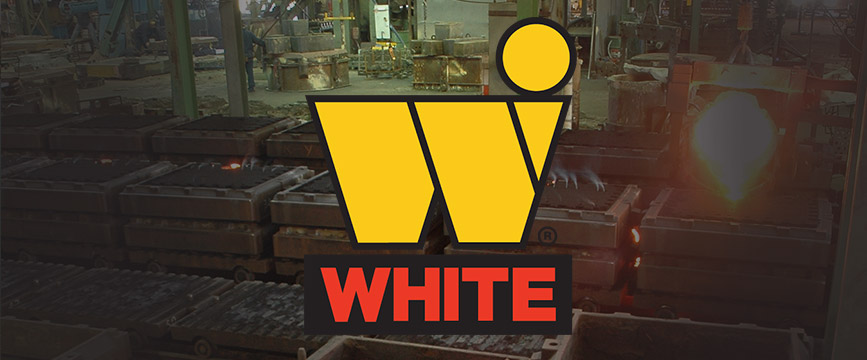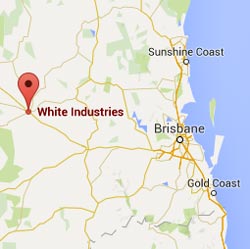Foundry Tech: Stainless Steel
Mild and low alloy steels continue to be the most widely used ferrous materials, due to their cost-effectiveness and high-performance properties. However, they do have a tendency to rust or corrode if left unprotected. This is due to the affinity of Iron (Fe) to readily oxidise with Oxygen in the air (O2), or in water (H20), or to be attacked in acidic or caustic environments. While this can be addressed by painting, plating such as galvanising, or the use of sacrificial anodes, these protection methods have a finite life.
Almost 110 years ago, a solution was found: Stainless Steel. In its simplest form, stainless steel contains enough Chromium (Cr) to form a very passive, very robust chrome oxide layer. This layer has the benefit that if it is damaged, the exposed area heals itself over time by re-oxidation.
Commonly known stainless steels in everyday use such as 316, 304, 18/8, 17-4PH, 420 etc, are wrought grades.
White Industries can offer cast equivalents to these and all the families discussed below.
Over the years, different Stainless Steels (SS) have been developed to provide different properties, with them falling into 2 broad groups; corrosion-resistant Stainless Steels and Heat- Resistant Stainless Steels, both of which then split into various sub-headings based on properties due to their metallurgical structure. In this article, we’ll look at Corrosion-Resistant Stainless Steels.
CORROSION-RESISTANT
Austenitic – the most common stainless steels like 316, 304 etc. They have Carbon (C) levels of 0.03-0.20%, Chromium (Cr) levels of 15-24%, Nickel (Ni) 8-30%, and Molybdenum (Mo) 0-7%. The austenitic grades become “sensitised” when heated, becoming susceptible to intergranular corrosion and stress corrosion cracking (SCC) due to chromium carbide precipitation at the grain boundaries, leading to Cr-depletion in the surrounding grains, so often Niobium (Nb) or Titanium (Ti) are added to form stable carbides. This family has very good corrosion resistance. They see extensive use in food industries and pump components for clear water applications.
Martensitic – these are hardenable alloys of essentially C in the range of 0.15-1.2% and Cr at 11-18% that are generally corrosion resistant only in relatively mild environments. They see use in wear applications such as shafts, gears, valves, pump components and blades.
Ferritic – these are non-hardenable alloys of C 0.01-0.20% and Cr 11-30% that have superior atmospheric and aqueous corrosion resistance to the martensitic grades. They remain ductile when cycled through temperature changes.
Precipitation Hardened – the most commonly known example of this group is 17-4PH. This family is known for its high strength and toughness. The alloys vary with C 0.08-0.15%, Cr 12-17%, Ni 3-8%, Mo 0-3% and Cu 1-5%. They are hardened then aged, with the aging processes imparting increasing levels of toughness at the expense of strength and hardness. These grades service in pump components and application where reasonable corrosion and wear resistance are required.
Duplex and Super Duplex – these grades provide superior corrosion resistance due to the presence of austenite and ferrite, hence the term duplex. Duplex SS possess higher strength and improved resistance to SCC than the austenitic grades. They are typically alloys with C 0-0.04%, Cr 22-26%, Ni 4-7%, Mo up to 4.5%, and further alloyed with Copper (Cu) and Nitrogen (N). They are used in applications where resistance to acids and aqueous chlorides is required.
The Stainless Steel family of High Alloy Steels sees use in an extremely wide variety of applications. While their unit cost is high compared to Mild and Low Alloy Steels due the amount of alloying, their cost-effectiveness lies in the extended service life achievable with the right selection of SS Grade.



